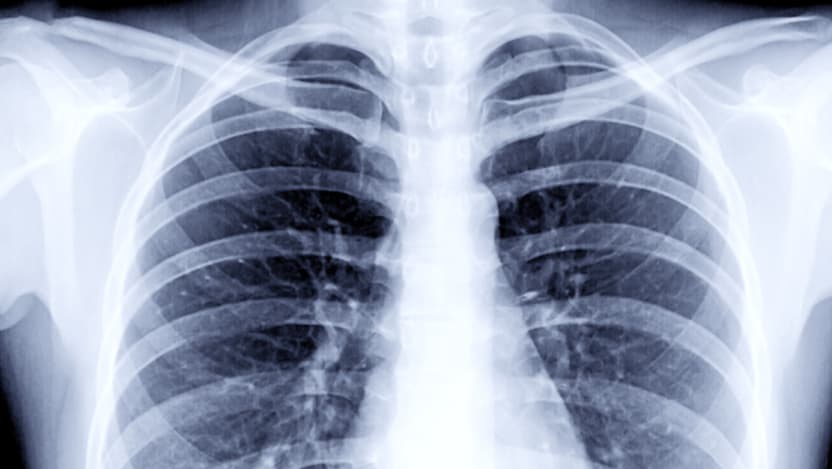The University of Chicago is awarded a major federal contract to host a new COVID-19 medical imaging resource center

A new center hosted at the University of Chicago — co-led by the largest medical imaging professional organizations in the country — will help tackle the ongoing COVID-19 pandemic by curating a massive database of medical images to help better understand and treat the disease.
Led by Maryellen Giger, PhD, of UChicago, along with leaders from the American College of Radiology (ACR), Radiological Society of North America (RSNA), and American Association of Physicists in Medicine (AAPM), the Medical Imaging and Data Resource Center (MIDRC) will create an open source database with medical images from thousands of COVID-19 patients. Funding is from the National Institute of Biomedical Imaging and Bioengineering at the National Institutes of Health (NIH).
The MIDRC is responding to an unmet need of the medical imaging community as doctors and scientists seek to better understand SARS-CoV-2, the virus that causes coronavirus disease 2019, or COVID-19, and its effects on the human body. By collecting and integrating images and their data via a dynamic, secure networked system, the MIDRC will provide a large-scale, open, common framework to enable technological advancements, guide researchers’ validation and use of AI (artificial intelligence), and translate clinical systems for the best patient management decisions.
“We have not sufficiently explored imaging for its role in helping us fight COVID-19, especially in terms of developing machine intelligence tools and systems,” said Giger, the A.N. Pritzker Professor of Radiology. “There currently are not enough curated data available to study. But having these top imaging organizations involved will make a difference — almost every scientist or clinician in medical imaging belongs to at least one of these organizations.”
Medical images provide important windows into the detection, diagnosis and monitoring of diseases like COVID-19; for example, X-rays or CT scans of the lungs have the potential to help doctors determine the severity of the disease and decide on an optimal treatment course for a patient. But examining individual images is time consuming and difficult for physicians, and automated systems can improve accuracy and speed. For artificial intelligence (AI) to accurately analyze any given scan, many thousands of images first must be collected and annotated to train machine-learning algorithms.
Funded under the NIH’s special emergency COVID-19 process, MIDRC proposes to create an open access platform to collect, annotate, store and share COVID-related medical images to enable effective and efficient clinical task-based distribution, analyses and validations.
“Through the MIDRC Data Commons Portal, investigators will be able to access images and data to expedite research that will provide solutions to the COVID-19 pandemic,” Giger said. “This will speed up the sharing of new research on COVID-19, answering questions about COVID-19 presentation in the lungs, the efficacy of therapies, associations between COVID-19 and other co-morbidities, and monitoring for potential resurgence of the virus.”
The project will involve five infrastructure development projects, conducted under the oversight of the MIDRC executive advisory committee. These projects include:
- Creation of a platform for COVID-19 imaging and associated data.
- Development of a real-world testing and implementation platform with direct, real-time connections to healthcare delivery organizations.
- Implementation of quality assurance and evaluation procedures across the MIDRC.
- Launch of a data commons portal for data intake, access and distribution.
- Linking of the MIDRC to other clinical and research data registries.
The committee also will oversee 12 research projects in support of solutions to the COVID-19 pandemic, overall providing funding and other resources to investigators at the ACR, RSNA and AAPM, as well as across 20 universities and the Food and Drug Administration.
Within three months, the MIDRC plans to upload more than 10,000 COVID-19 thoracic radiographs and CT scan images via the existing input portals of the RSNA repository and the ACR registry, allowing researchers worldwide to access the images and accompanying clinical data to answer new questions about the disease.
“The University of Chicago is well prepared to host the MIDRC, as members of our faculty have led the development of data commons repositories in the past, including the National Cancer Institute’s Genomic Data Commons,” said Kenneth S. Polonsky, MD, Dean of the Division of the Biological Sciences and Pritzker School of Medicine. “Under the leadership of Dr. Giger and representatives from the top professional organizations in medical imaging, the MIDRC will provide a resource that will accelerate the transfer of knowledge and innovation around SARS-CoV-2 and give us the tools needed to fight the pandemic.”
While COVID-19 will be its initial focus with the $20 million two-year federal contract, it will not be their only target; the team hopes to expand the MIDRC to become a resource that would span diseases and disciplines, creating focused medical imaging data commons and machine intelligence pipelines for chronic and other infectious diseases, with the federal contract renewable to $50 million over five years.
“This effort will enable the rapid open distribution of curated COVID-19 imaging and associated data to empower a broad community of data scientists in academia, government and industry to answer, quickly and rigorously, critical questions about patient care,” Giger said. “Ultimately, it will be expanded to incorporate additional data from multiple registries and repositories to support the NIH’s data collection efforts, allowing researchers to address topics no single archive could inform independently.”
